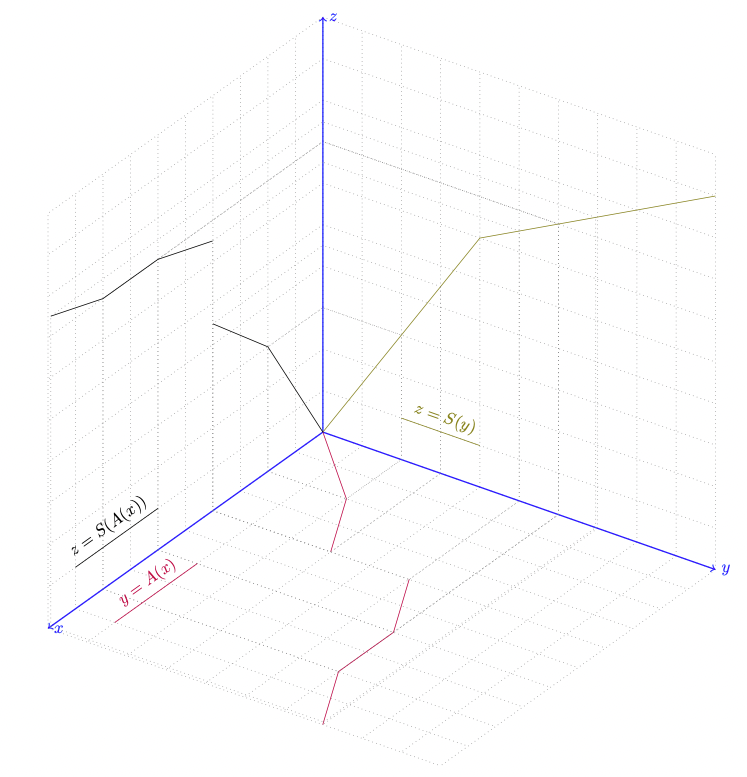This example draws the composition of two functions in a semi-automatic way, using 3d and intersections.
\documentclass[tikz,border=10pt]{standalone}\usetikzlibrary{intersections}\usepackage{tikz-3dplot}\begin{document}%%%%%%%%%%%%%%%%%%%%%%%%%%%%%%%%%%%%%%%%%%%%%%%%%%%%%%%%%%%%%%%%%%%%%%%% This tikz-code allow to "draw" the composition of two functions.%%%% The principle is the following: one have to draw y=A(x) and z=S(y),%% then, for each X, uses projections and intersections to define the%% point (X,0,S(A(X)).%%% This is the core command:%%% It assumes%%% - the function A is drawn on name path=A%%% - the same for S%%% - it exist paths Xaxis, Yaxis, Zaxis% Parameters:% #1: X% #2: name of the point to store (X,0,S(A(X))\newcommand{\drawDfromX}[2]{% Set the source\coordinate (X) at (#1,0,0);% Goes from (x,0) to (x, A(x))\path[name path=XtoA] (X) -- ++(0,10,0);\draw[proj,name intersections={of=A and XtoA}] (X) --(intersection-1) coordinate (AX);% Goes to A(X) on Y axis\path[name path=AtoY] (AX) -- ++(-10,0,0);\draw[proj, name intersections={of=AtoY and Yaxis}] (AX) --(intersection-1) coordinate (YfromX);\path[name path=YtoS] (YfromX) -- ++(0,0,10);% Goes from (0,y,0) to (0, y, S(y))\draw[proj, name intersections={of=S and YtoS}] (YfromX) --(intersection-1) coordinate (SY);\path[name path=SYtoZ] (SY) -- ++(0,-10,0);\draw[proj, name intersections={of=SYtoZ and Zaxis}] (SY) --(intersection-1) coordinate (Z);% Draw z=S(A(x))=D(x)\path[name path=XtoD] (X) -- ++(0,0,10);\path[name path=ZtoD] (Z) -- ++(10,0,0);



